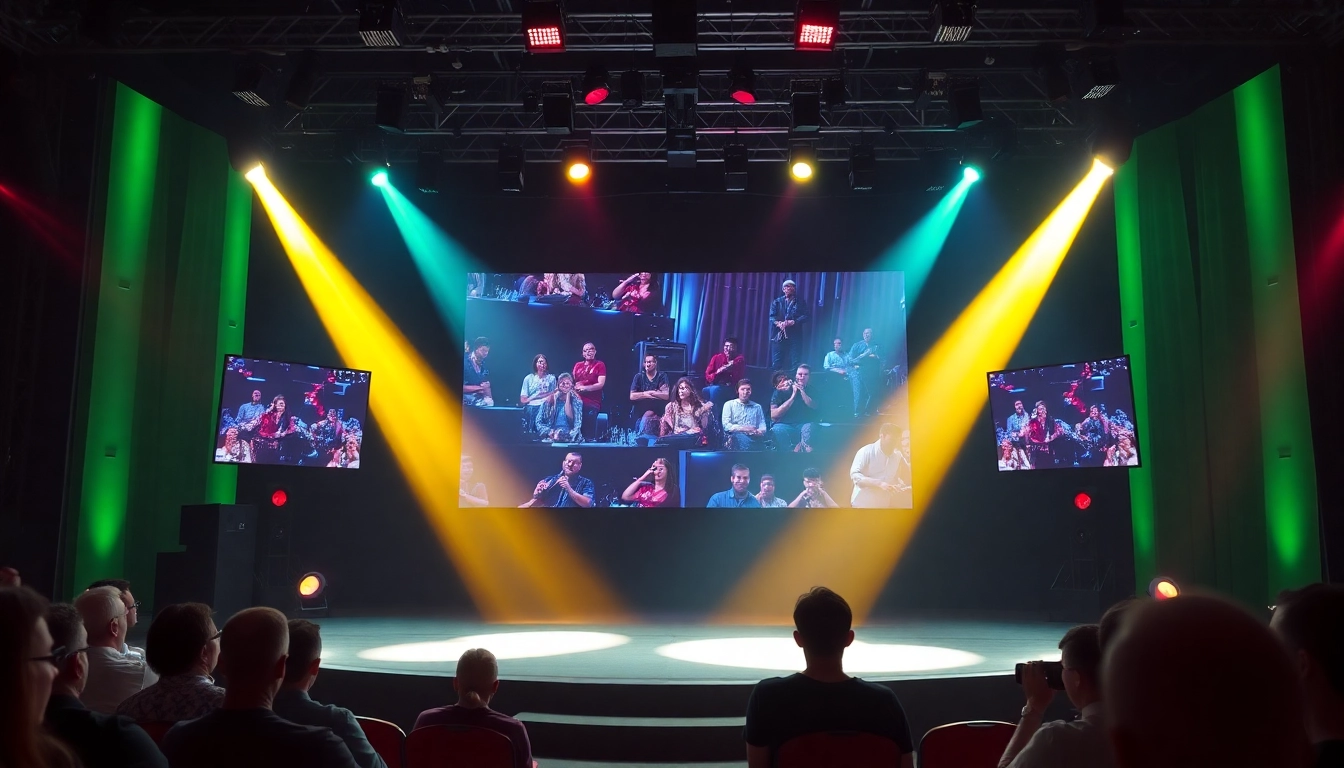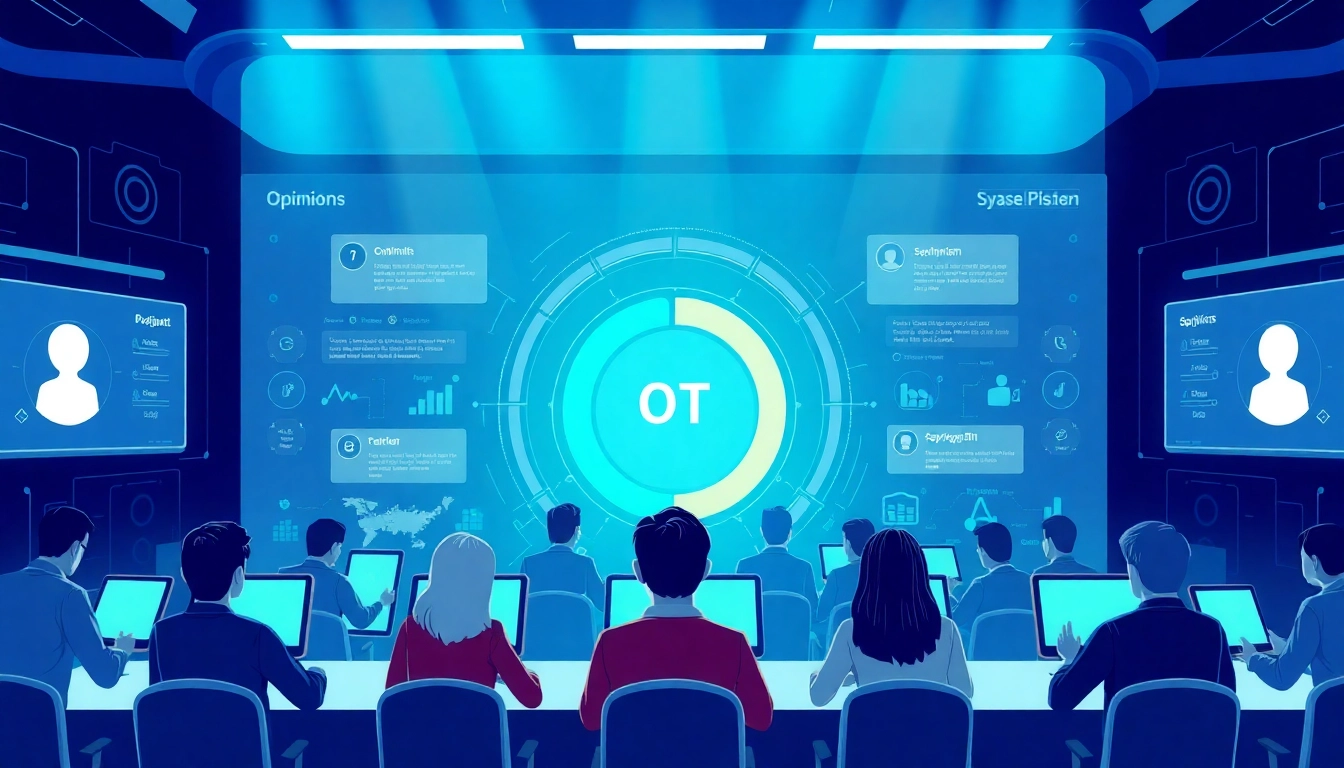Understanding the Virtual Audience System
What is a Virtual Audience System?
A Virtual Audience System (VAS) is a technological framework designed to foster real-time interaction between hosts—such as presenters, performers, or educators—and their audiences through digital platforms. It leverages the internet’s capabilities to create immersive and engaging experiences, allowing audience members to participate actively regardless of their physical location. In a world where traditional gatherings have been disrupted, a Virtual Audience System serves as a critical tool for maintaining engagement and connection.
Key Features and Benefits
The features of a Virtual Audience System vary significantly depending on the platform but generally include:
- Real-time Interaction: Enables spontaneous communication through chat functions, voice, or video.
- Analytics and Insights: Offers data collection on participant engagement, preferences, and interactions.
- Customization: Provides options for branding, layouts, and interactive elements tailored to specific audience needs.
- Accessibility: Ensures that individuals with disabilities can fully participate through various accommodations.
- Integration with Other Tools: Allows for functionality with presentations, polls, and other applications to enrich the audience experience.
The benefits are manifold, including:
- Wider Reach: Engaging a global audience, beyond geographical constraints.
- Cost-Effective: Reducing expenses associated with physical venues and logistics.
- Simplified Recording: Capturing sessions for future use or analysis without significant additional effort.
- Increased Engagement: Interactive tools lead to higher participant retention and satisfaction rates.
Comparing Virtual Audience Systems
Selecting the right Virtual Audience System involves understanding the various options available. There are numerous platforms, ranging from comprehensive event management systems to specialized tools for specific needs such as education or corporate training. Popular options include Zoom, Microsoft Teams, and platforms like Hopin and Remo, each offering unique functionalities targeting different types of interactions.
When comparing these systems, consider the following aspects:
- Ease of Use: User-friendly interfaces reduce training time and enhance the participant experience.
- Feature Set: Comprehensive options may be necessary for complex events requiring polls, networking, or breakout sessions.
- Customer Support: Reliable support can be crucial during live events where technical issues may arise.
- Pricing: Evaluate cost-effectiveness based on the features and performance requirements of your intended events.
Implementing a Virtual Audience System
Preparation and Setup Steps
Implementing a Virtual Audience System necessitates careful planning to ensure a seamless and engaging experience for all participants. Here are the key preparation steps:
- Define Objectives: Clearly outline the goals of your virtual event, whether for education, entertainment, or interactive engagement.
- Select the Right Platform: Based on your evaluation criteria discussed previously, choose a platform that aligns with your objectives.
- Technical Setup: Ensure reliable internet connectivity, test audio and video equipment, and familiarize yourself with the platform’s functionalities.
- Create an Agenda: Develop a detailed schedule that includes activities, breaks, and interactive segments, keeping engagement high throughout.
- Promote the Event: Utilize various channels to inform potential participants, build excitement, and ensure strong attendance.
Choosing the Right Tools
The choice of tools can significantly influence the effectiveness of a Virtual Audience System. Essential tools may include:
- Video Conferencing Software: For hosting live sessions and providing a platform for interaction.
- Polling Tools: Such as Slido or Mentimeter, to facilitate real-time audience feedback and engagement.
- Project Management Tools: To help organize the event logistics and coordinate with team members.
- Audience Analytics Platforms: For capturing data and generating insights post-event, allowing for continuous improvement.
By selecting the appropriate combination of tools, event hosts can create environments for greater audience interaction, thus enhancing overall participant experience.
Common Implementation Challenges
While implementing a Virtual Audience System can enhance engagement, various challenges may arise:
- Technical Issues: Connectivity problems can derail the experience. Always have a backup plan, including alternative connections or platforms.
- Engagement Levels: Participants may become passive if the session isn’t engaging enough. Incorporate interactive elements like polls and breakout rooms to keep the energy alive.
- Audience Accessibility: Ensure your platform has features that accommodate individuals with disabilities, such as captioning and screen reader compatibility.
- Time Zone Differences: If your audience is global, choose a time that maximizes participation, or consider scheduling multiple sessions.
Maximizing Engagement with a Virtual Audience System
Strategies for Active Participation
Fostering active participation in a virtual setting can significantly enhance audience engagement. Here are effective strategies to consider:
- Pre-Event Engagement: Send out surveys or materials to potential participants beforehand, encouraging them to think about the topics that will be discussed.
- Utilize Interactive Features: Incorporate elements such as breakout rooms for small discussions or collaborative tools where participants can contribute ideas.
- Gamification: Implement quizzes, challenges, or contests that offer incentives for participation, creating a fun and competitive environment.
- Follow Up: After the session, reach out to participants for feedback, and share highlights, ensuring they feel valued and connected.
Measuring Audience Interaction
Measuring audience interaction is vital for understanding engagement levels and improving future events. Metrics to consider include:
- Participation Rates: Track how many attendees participated in polls, Q&A sessions, and other interactive components.
- Feedback Surveys: Post-event surveys can provide insights into participant satisfaction and areas for improvement.
- Session Retention Rates: Analyze how many participants stayed for the entire duration of the event versus those who dropped off early.
- Social Media Engagement: Monitor mentions, shares, and comments related to your event to gauge broader audience reactions.
Case Studies of Successful Engagement
Learning from successful implementations of Virtual Audience Systems can provide best practices for future events. Here are a few case studies:
- Company Training Seminar: A company utilized an engaging mixture of live presentations and breakout discussion groups for their employee training events, resulting in a 90% satisfaction rate post-event. Participants appreciated the opportunity to interact with both leadership and their peers.
- Educational Webinars: An online university hosted a series of webinars featuring guest lecturers who involved students through real-time polls and Q&A segments, significantly boosting engagement ratings. The university then found that enrollment inquiries rose by 40% post-webinar.
- Virtual Concerts: A music artist held a live-streamed concert that included live chats and social media challenges, resulting in record-breaking attendance numbers and an increased fan base. Audience interactions during the event were tracked and directly influenced future content strategies.
Advanced Features of Virtual Audience Systems
Interactive Elements to Boost Engagement
Advanced Virtual Audience Systems often come with interactive features designed to elevate engagement. Such elements include:
- Live Chat Features: Enable real-time discussions among participants, allowing for immediate feedback and interactions.
- Gamified Content: Implement quizzes or interactive games that reward participation, keeping the momentum alive during events.
- Augmented and Virtual Reality: Some systems incorporate AR and VR, providing immersive experiences that educate and entertain simultaneously.
Integrating Polls and Q&A Sessions
Polls and Q&As support audience participation and provide valuable insights to hosts. Here’s how to effectively integrate them:
- Post Questions: Implement Q&A segments throughout the session, allowing participants to ask questions relevant to the topic being discussed.
- Real-Time Polling: Use instant polls to gauge audience opinions, adjusting the flow of the session based on live feedback.
- Data Utilization: After the event, analyze poll data to enhance future presentations and tailor content to audience preferences.
Utilizing Data Analytics for Improvement
Data analytics is fundamental for evaluating the success of Virtual Audience Systems. How to make the most of it:
- Engagement Metrics: Use analytics tools to track metrics such as average watch time, interaction rates, and drop-off points.
- Demographic Insights: Understanding who attended and their backgrounds can help tailor content to meet audience expectations in future events.
- Feedback Analysis: Conduct thorough analyses of feedback collected through surveys and informal discussions to pinpoint strengths and weaknesses in engagement strategies.
The Future of Virtual Audience Systems
Evolving Technologies and Trends
The future of Virtual Audience Systems is promising with many evolving technologies set to transform how audiences engage:
- Artificial Intelligence: AI is increasingly used to personalize experiences, offering tailored content recommendations to participants based on past behavior and preferences.
- Enhanced Integrations: The integration of various applications and software solutions will allow for more seamless experiences that extend beyond the individual event.
- Increased Accessibility: Future systems will place an emphasis on inclusivity, incorporating features that cater to diverse audiences, including different languages and accessibility needs.
Anticipated Developments in Engagement
Looking ahead, it’s expected that engagement will continue to evolve through:
- More Dynamic Interactions: Expect to see innovations that allow participants to influence event pathways, creating more personalized experiences.
- Integration of Virtual Reality: The growth of VR technology may lead to fully immersive virtual events that mimic in-person interactions.
- Smart Analytics: Advanced analytics will provide even deeper insights into engagement and interaction, helping hosts fine-tune their approach continually.
Preparing for Future Challenges
Staying ahead of future challenges requires proactive planning:
- Continuous Learning: Hosts should remain informed about emerging technologies and trends in virtual engagement to keep their events relevant and impactful.
- Flexible Strategies: Building flexible strategies to adapt to changing audience preferences and technological advancements will be crucial.
- Crisis Management: Establish contingency plans for potential technological failures or unexpected challenges during live events to maintain participant trust and satisfaction.



